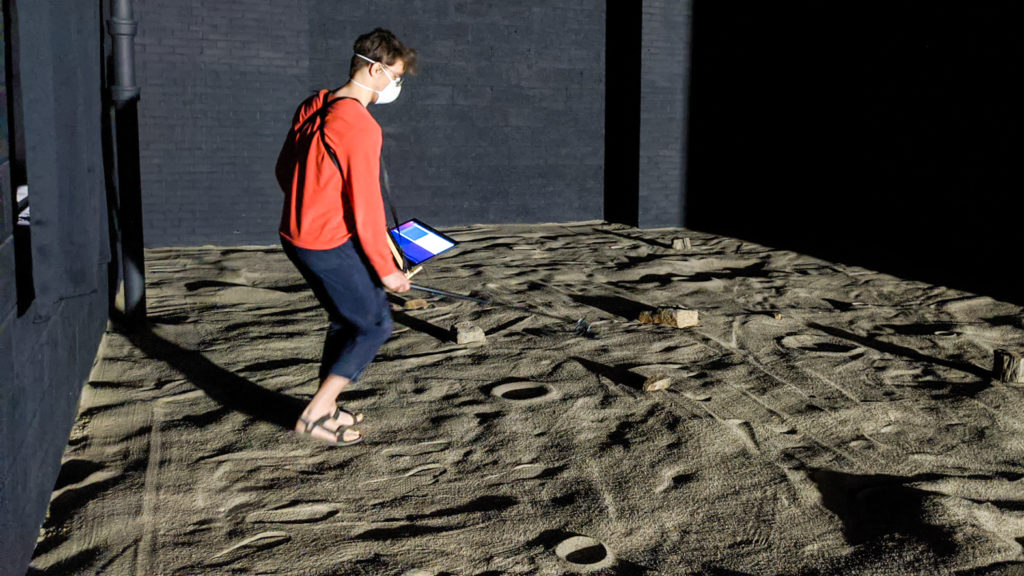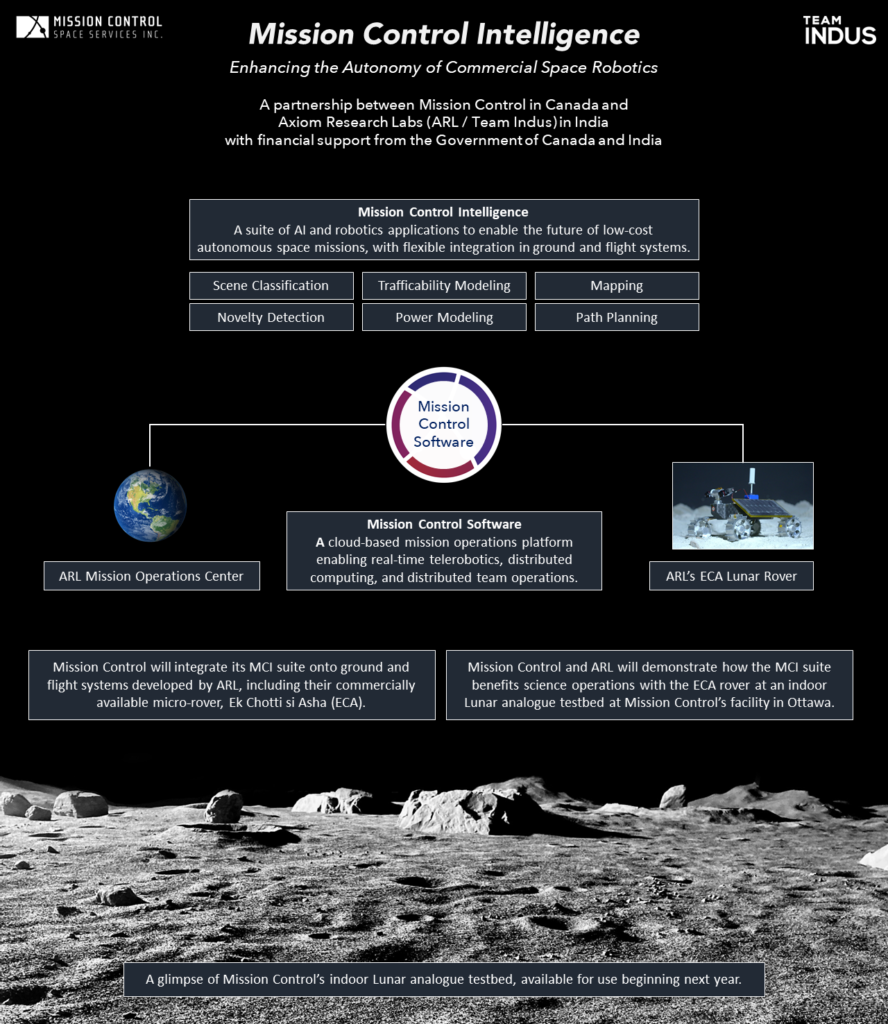
A Guest Blog by Braden Stefanuk
Braden is an MASc student at Concordia University and is working with Mission Control as a Robotics and Machine Learning Specialist. In the Fall of 2020, Braden helped us develop our indoor lunar analogue testbed and our AI technologies as part of the ASAS-CRATERS project. Read about his experience below.
In the early days of my collaboration with Mission Control we held bi-weekly conversations about research directions that could serve to benefit both my research lab and their company. During these first several months, I found the team at Mission Control to be dedicated, passionate, and unafraid to have some fun in the process. When they began to conduct preliminary research into one of their newest software technologies (ASAS-CRATERS), I was immediately compelled to join the project. Though my relationship with Mission Control began in a purely academic form, it has since evolved into a strong, enduring collaboration.
Before being brought fully on-board as a research and development intern, I had a number of preconceptions about Mission Control and what the opportunity had in store for me. For example, I knew that they were an up-and-coming company, I knew of their legendary field expeditions to Iceland and White Sands, and I knew that they had a great reputation for quality and professionalism within the space industry. Even with these highly held preconceptions, my internship turned out to be a much more diverse and interesting experience than I had expected.
Throughout my internship my days were filled with a fascinating mixture of 3D modeling, software development, research on lunar geologic processes, technical documentation, and conversations with space experts all around the globe. I held discussions with roboticists from the Canadian Space Agency and other space companies, and lunar scientists from universities across Canada. During this time I also presented at the i-SAIRAS 2020 conference, gaining invaluable insight into possible directions for future work, and learning much about myself, especially how I perform under pressure.

Despite my multi-faceted role at Mission Control, my internship work culminated in the construction of an indoor lunar analogue terrain at their Ottawa headquarters. Originally, this terrain served as a platform where I collected high-fidelity visual data to aid in the creation of new machine learning algorithms. Now, in conjunction with the education and outreach team, individuals around the world will have access to Mission Control’s indoor terrain to help train future rover operators, developing a hands-on understanding of mission-level constraints that may be faced in actual lunar exploration.
Beyond the experience that I gained at Mission Control, the best part of interning with them was the positive, future-focused work environment. From the executives to the interns, the whole team works closely and cooperatively. I found that—even as an intern—I was accepted as a valuable part of the team, and that my opinions were not only heard, but respected.
Biography
Braden is an MASc student at Concordia University and is working with Mission Control as a Robotics and Machine Learning Specialist. Before joining the team he was the payload and remote sensing lead for Space Concordia’s CubeSat. He received an Honours BSc in Physics from the University of Calgary and is an avid outdoorsman, sports enthusiast, and hobbyist musician.
Connect with Braden on LinkedIn to say hi!




